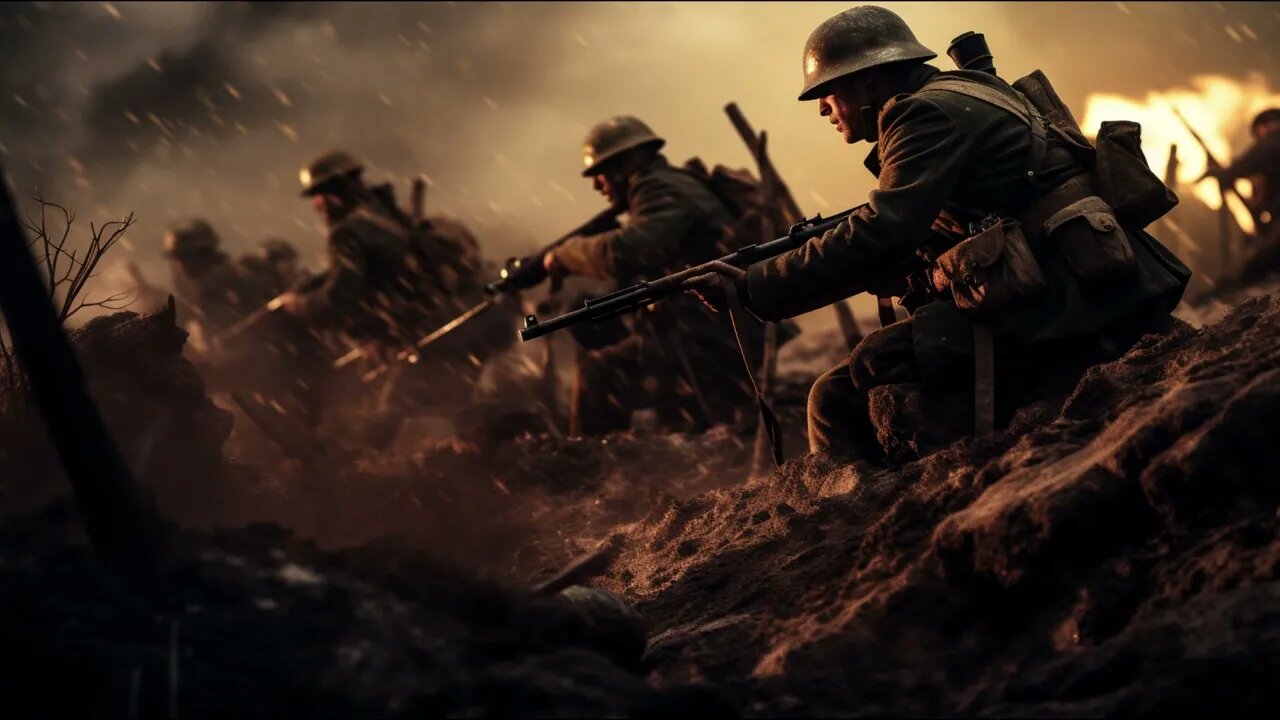Premium Only Content

Revolutionizing the Battlefield: The Gewehr 43 in World War II
Explore the pivotal role played by the Gewehr 43, the innovative German semi-automatic rifle, during World War II. From its development to its deployment on the front lines, witness how this weapon revolutionized infantry firepower, leaving a lasting impact on military small arms design.
===============================
SUBSCRIBE TO THIS CHANNEL FOR MORE WORLD WAR STORIES:
https://www.youtube.com/@worldwarstory
===============================
TIMESTAMP
0:00 - Introduction to the Gewehr 43
0:23 - Background and development of the semi-automatic rifle
0:51 - Influence of earlier designs like the G41(M) and G41(W)
1:19 - Key improvements in the Gewehr 43 design
1:42 - Deployment of the G43 in the German military
2:02 - Advantages of the semi-automatic capability
2:25 - Performance and reception of the G43
2:48 - Shortcomings of the Gewehr 43
3:14 - Legacy and enduring impact of the G43
3:56 - Conclusion and its significance in infantry small arms development
Gewehr 43
The Gewehr 43, also known as the G43, was a German semi-automatic rifle used during World War II.
German soldiers relied on the Gewehr 43's semi-automatic action for increased firepower.
The Gewehr 43 had a detachable magazine, making it a notable advancement in infantry small arms.
This rifle's design incorporated a gas-operated system for improved reliability.
The Gewehr 43 was influential in the development of post-war military rifles.
G43 rifle history
Exploring the history of the G43 rifle reveals its significant impact on World War II.
The G43 rifle's development stemmed from the need for enhanced infantry firepower.
Understanding G43 rifle history involves examining its predecessors, the G41(M) and G41(W).
The G43's legacy in small arms history is a crucial aspect of its rifle history.
In the context of military innovation, G43 rifle history represents a pivotal moment.
World War II firearms
World War II witnessed a wide array of firearms, including bolt-action rifles, submachine guns, and semi-automatic rifles.
Firearms played a central role in the combat tactics and strategies of World War II.
The development and deployment of World War II firearms were influenced by the evolving needs of armed forces.
Iconic firearms such as the Karabiner 98k and M1 Garand were used extensively during World War II.
The study of World War II firearms is a window into the technology and tactics of the era.
Semi-automatic rifle
A semi-automatic rifle like the Gewehr 43 enables rapid fire without manual bolt cycling.
Semi-automatic rifles are valued for their versatility in both combat and civilian shooting sports.
The semi-automatic action of rifles like the G43 greatly improved infantry firepower.
These rifles have a wide range of applications, from military service to hunting and target shooting.
The development of semi-automatic rifles represented a significant step in firearms technology.
German infantry small arms
German infantry small arms during World War II included rifles like the Karabiner 98k and Gewehr 43.
The performance of German infantry small arms had a direct impact on combat effectiveness.
Small arms played a crucial role in the tactics and strategies of the German infantry during the war.
The development of these small arms was a response to the evolving needs of the German military.
The legacy of German infantry small arms extends to subsequent post-war firearms development.
These sentences can be useful for creating content related to the specified keywords, whether for YouTube videos, articles, or other forms of media.
Disclaimer:
In our Bio - https://www.youtube.com/@worldwarstory
#RevolutionizingtheBattlefield #TheGewehr43inWorldWarII
-
 0:31
0:31
World War Stories
1 year agoHarlem Hellfighters Valor and Resilience
115 -
 1:08:31
1:08:31
Nick Freitas
5 hours agoIs America Really back? America Awakened with Dr Turley
12.9K1 -
 9:24
9:24
Red Pill MMA
13 hours agoThe Truth About Ireland’s Homeless Crisis
12.8K8 -
 53:16
53:16
MattMorseTV
4 hours ago $7.64 earned🔴1.6 MILLION just DISAPPEARED.🔴
40.4K61 -
 3:14:08
3:14:08
Spartan
3 hours agoOMiT Spartan | Halo for a bit, Octopath after maybe
28.2K2 -
 1:21:56
1:21:56
Mally_Mouse
1 day agoLet's Play!! -- Toontown (Tuesday) Rewritten!
30.6K3 -
 LIVE
LIVE
LFA TV
23 hours agoLFA TV ALL DAY STREAM - TUESDAY 8/12/25
619 watching -
 1:02:04
1:02:04
Heart & Mind with Dr. Dina McMillan
12 hours ago"Episode 52 - Anniversary Episode - Most Popular Topics!"
16.5K -
 1:02:29
1:02:29
BonginoReport
6 hours agoDems Fight Trump’s Moves To Clean Up Cities - Nightly Scroll w/ Hayley Caronia (Ep.110)
121K60 -
 1:29:51
1:29:51
Kim Iversen
6 hours agoGrok Calls Out Israel's Genocide And Gets Censored | Is Nick Fuentes A Fed?
96.8K205